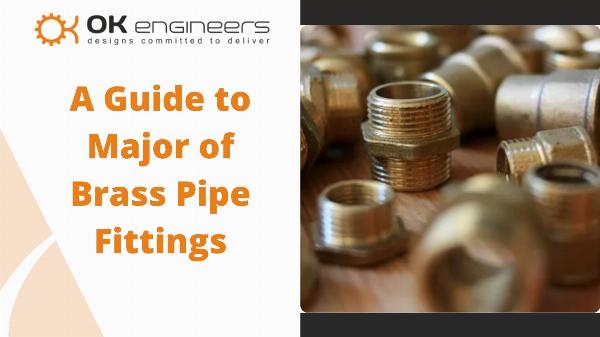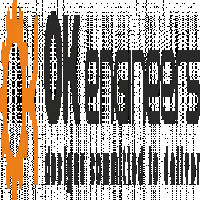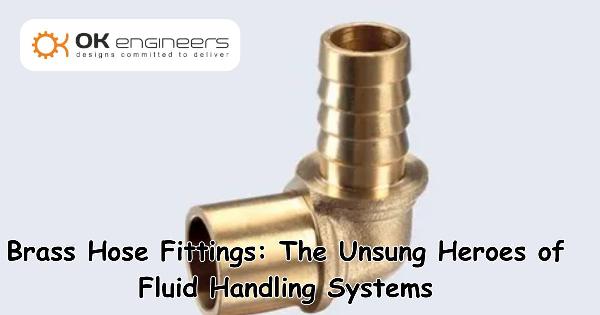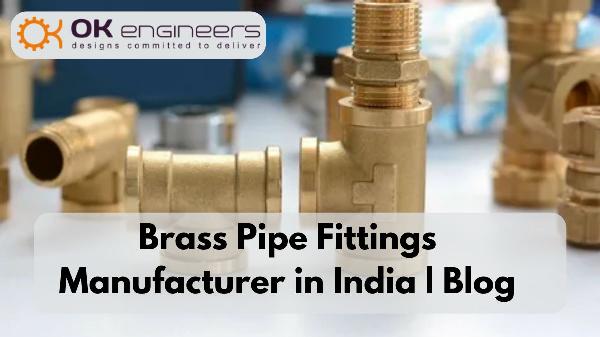The Guide to Major Types of Brass Pipe Fittings | Blog

Strong 8k brings an ultra-HD IPTV experience to your living room and your pocket.
Brass pipe fittings are indispensable components in various plumbing and industrial applications. Known for their durability, resistance to corrosion, and excellent conductivity, these fittings are essential in ensuring reliable and efficient fluid and gas flow. In this comprehensive guide, we will delve into the major types of brass pipe fittings, their unique characteristics, and their applications. This exploration will not only provide valuable insights but also underscore the importance of selecting the right fitting for specific requirements.
1. Elbow Fittings
Elbow fittings are used to change the direction of flow in a piping system. These fittings are available in 45-degree and 90-degree angles, making them versatile for various installations.
45-Degree Elbow: Used where a minor change in direction is needed.
90-Degree Elbow: Commonly used for significant directional changes.
Elbows are crucial in systems where space constraints prevent straight pipes. Their design ensures smooth flow with minimal turbulence, enhancing the overall efficiency of the system.
2. Tee Fittings
Tee fittings are shaped like the letter 'T' and are used to combine or split fluid flow. They come in various configurations, including:
Equal Tee: All three ends are of the same size.
Reducing Tee: One end is smaller, allowing for different pipe sizes to be connected.
These fittings are vital in creating branch lines in plumbing systems, facilitating multiple connections from a single source.
3. Coupling and Union Fittings
Couplings and unions are used to connect two pipes together. While they may seem similar, they serve distinct purposes.
Coupling: Permanently connects two pipes, often used for repairs.
Union: Allows for easy disconnection and reconnection, ideal for systems that require maintenance.
Couplings are straightforward and robust, while unions provide flexibility for future modifications or repairs.
4. Adapter Fittings
Adapter fittings are used to connect pipes of different types or sizes. These are particularly useful in systems where different materials are employed, such as copper to brass pipe fittings. Adapters ensure a seamless transition between varying pipe types, maintaining the integrity and efficiency of the system.
5. Nipple Fittings
Nipples are short pieces of pipe with male threads on both ends. They are used to connect two female-threaded fittings or pipes. Available in various lengths and diameters, nipples are essential in extending pipe runs and facilitating connections in tight spaces.
6. Bushing Fittings
Bushings are used to reduce the size of a pipe fitting. Unlike reducing tees or couplings, bushings fit inside the pipe, providing a smooth transition to a smaller diameter. They are often used in high-pressure systems where reducing the size gradually is necessary to maintain system integrity.
7. Cap and Plug Fittings
Caps and plugs are used to close off the end of a pipe.
Cap: Fits over the end of a pipe, providing a secure seal.
Plug: Fits inside the pipe end, sealing it from within.
These fittings are crucial for ending a pipeline securely, preventing leaks and maintaining system pressure.
8. Valve Fittings
Valves are used to control the flow of fluids and gases. They come in various types, including ball valves, gate valves, and check valves.
Ball Valve: Utilizes a spherical disc to control flow, known for its reliability and ease of operation.
Gate Valve: Uses a sliding gate to open or close the flow, ideal for on/off control.
Check Valve: Allows fluid to flow in one direction only, preventing backflow.
Valves are critical in regulating system performance, ensuring safety, and optimizing flow control.
9. Compression Fittings
Compression fittings are used to connect pipes without the need for soldering or threading. They consist of a nut, a compression ring, and a compression seat. When the nut is tightened, the compression ring is compressed against the pipe, creating a watertight seal. These fittings are ideal for applications where quick and easy installation is required.
10. Flare Fittings
Flare fittings are used in high-pressure applications. The end of the pipe is flared, and the fitting is secured with a flare nut. This creates a strong and reliable seal, making flare fittings suitable for gas lines and refrigeration systems.
11. Cross Fittings
Cross fittings have four openings in a cross shape. These fittings are used to connect four pipes at a single intersection. They are less common due to the complexity of the system they create but are essential in certain industrial applications.
12. Street Elbow
A street elbow has one female and one male thread, allowing it to connect to a fitting on one end and a pipe on the other. This unique design makes street elbows versatile and useful in tight spaces where a standard elbow might not fit.
13. Swivel Fittings
Swivel fittings allow for rotation of the connected pipes or hoses. These fittings are commonly used in applications where the system needs to move or be repositioned frequently, ensuring flexibility without compromising the seal.
Applications of Brass Pipe Fittings
Brass pipe fittings are used across various industries due to their versatile properties:
Plumbing: Ideal for both residential and commercial plumbing systems due to their durability and resistance to corrosion.
HVAC: Used in heating, ventilation, and air conditioning systems for reliable connections.
Gas Lines: Preferred for their strength and ability to withstand high pressure.
Marine Applications: Resistant to saltwater corrosion, making them suitable for marine environments.
Industrial Use: Essential in manufacturing processes that require robust and reliable fittings.
Advantages of Brass Pipe Fittings
Durability: Brass is known for its long-lasting properties, ensuring fittings remain functional for years.
Corrosion Resistance: Brass resists corrosion from water, chemicals, and environmental factors, making it ideal for various applications.
Conductivity: Excellent thermal and electrical conductivity make brass fittings suitable for certain industrial applications.
Versatility: Available in numerous shapes and sizes, brass fittings can be used in a wide range of applications.
Ease of Installation: Brass fittings are relatively easy to install, often requiring simple tools and techniques.
Choosing the Right Brass Pipe Fitting
Selecting the appropriate brass pipe fitting is crucial for the efficiency and safety of any system. Here are some factors to consider:
Application Requirements: Understand the specific needs of your system, such as pressure, temperature, and flow requirements.
Compatibility: Ensure the fitting is compatible with the type of pipes being used.
Size: Accurate measurements are essential to ensure a proper fit and avoid leaks.
Type of Fitting: Choose the fitting type that best suits the application, whether it's an elbow for direction change or a valve for flow control.
Quality: Opt for high-quality fittings from reputable manufacturers to ensure reliability and longevity.
Brass Pipe Fittings by OK Engineers
In the realm of brass pipe fittings, OK Engineers stands out as a premier manufacturer. Their commitment to quality and innovation has made them a trusted name in the industry. OK Engineers offers a comprehensive range of fittings that cater to various applications, ensuring that every need is met with precision and reliability. Their expertise and dedication to excellence make them a go-to choice for professionals seeking dependable brass pipe fittings.
Maintenance and Care of Brass Pipe Fittings
Proper maintenance is essential to prolong the life of brass pipe fittings. Here are some tips to ensure their longevity:
Regular Inspections: Periodically check fittings for signs of wear, corrosion, or damage.
Cleaning: Keep fittings clean to prevent build-up of debris or corrosion.
Tightening: Ensure that fittings are securely tightened to prevent leaks.
Lubrication: Apply appropriate lubricants to threads and moving parts to ensure smooth operation.
Replacement: Replace worn or damaged fittings promptly to maintain system integrity.
Conclusion
Brass pipe fittings are an integral part of various plumbing and industrial systems. Their versatility, durability, and reliability make them a preferred choice for many applications. Understanding the different types of fittings and their specific uses is essential for selecting the right components for your needs. By considering factors such as application requirements, compatibility, and quality, you can ensure that your system operates efficiently and safely. With manufacturers like OK Engineers providing high-quality brass pipe fittings, you can trust that your systems will be equipped with the best components available.
Note: IndiBlogHub features both user-submitted and editorial content. We do not verify third-party contributions. Read our Disclaimer and Privacy Policyfor details.




